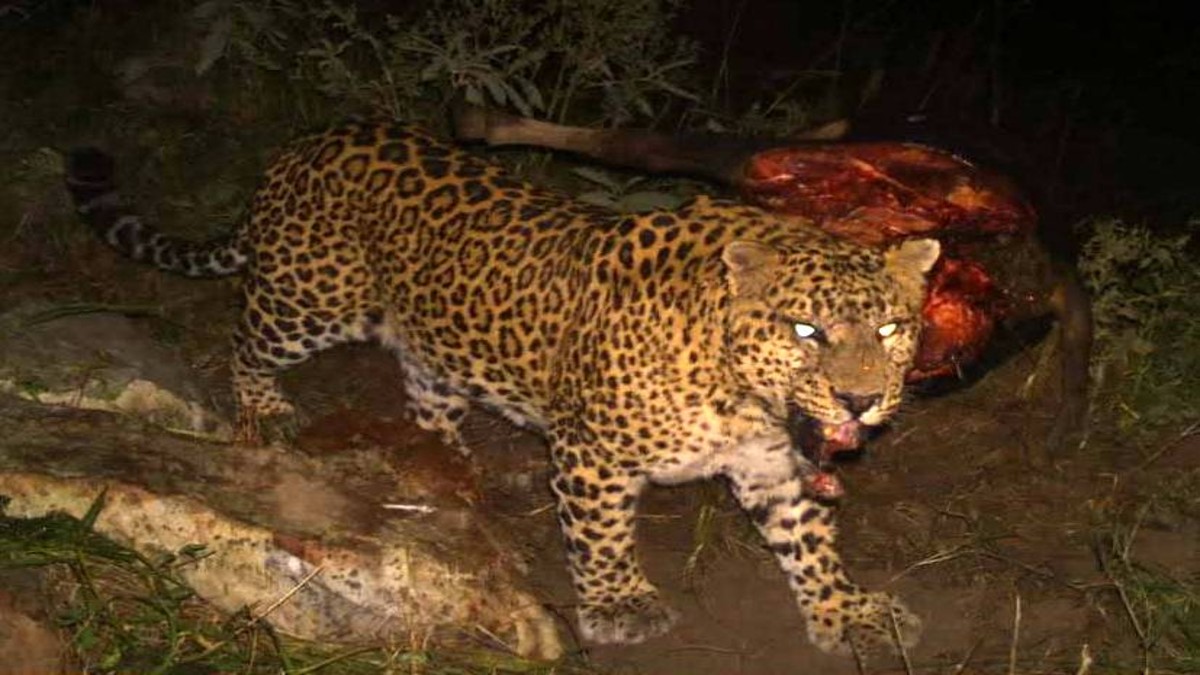Strange killing pattern of a leopard, active in a remote part of district Tehri (Uttarakhand), has refreshed the memories of the legendary Jim Corbett era. The man-eating leopard has killed three people in three months to terrorise over a dozen villages in Bhilangana block. Like the infamous Rudraprayag man-eating leopard, which was gunned down by Corbett in 1926, even this feline is not returning to the kill to make the operation of the forest department for eliminating the man-eater challenging.
Normal life remains affected, and a curfew-like situation prevails. The villagers have been reeling under the fear of this man-eater leopard since the past three months. One incident is following another. On July 22, this year, nine-year-old Poonam was killed by the leopard in Bhaud village. The man-eater executed its second kill at the nearby Purwal Goan by killing three-year-old Raj Shah on September 29. The latest incident, on 19 October, in which the feline killed 13-year-old Sakshi Kaintura at Mahargoan, has created panic among the local people. All these affected villages are located in a radius of 5 square kilometres. Taking precautionary measures, the primary schools in the affected area were closed for three days. The forest department and local administration are providing vehicles for the senior section students to ferry them to school and bring them back to their villages.
The Uttarakhand forest department has intensified efforts to eliminate the man-eater leopard. Forest Ranger Ashish Nautiyal says, “Three teams of the department have been deployed in the affected villages. We have installed 20 camera traps in different locations; 3 cages are placed in strategic locations, and drone monitoring is being done under the operation.”
The parents are concerned as children are more vulnerable to leopard attacks. This is also proved by the recent incidents in the Bhilangana block in which three children have lost their lives in feline attacks. When the first incident took place, monsoon was active in the hill state, and it was time for conducting various agriculture-related activities. Social activist Awtar Negi from Doni village says, “It is the harvesting time of various oilseeds and pulses in the hills. But the villagers are fearful and moving in groups. Most of the activities remain disturbed due to the fear of the man eating a leopard."
Impact Shorts
More ShortsWhen famous writer and Shikari Jim Corbett came to Rudraprayag in 1926 for a special operation to kill the man-eater, he was surprised by its killing pattern. On this he states in his book Man-eating Leopard of Rudraprayag, “When a leopard, or tiger, leaves of his own accord a kill in the open, in an exposed spot, it is an indication that the animal has no further interest in the kill.” In a move to prevent other animals from stealing the kill, leopards generally hide their unfinished kills.
The man-eater of Bhilangana is also not returning to the kill. Three operations of the forest department to camp near the kill and wait for the leopard in affected villages have failed. Even the other practices of the leopard are strange. The feline is just eating the neck and face portion of the kill, not touching other portions of the body. Even the operation time is shocking, from 3 pm to 5 pm. Sanjay Tiwari, Pradhan of Purwal Goan, rues, “We are living in fear. Don’t know when our lives will turn normal.”
Purwal Goan is a small village with about 85 houses and a population of about 500 people. The September 29 incident, in which three-year-old Raj Shah was killed, has totally shattered the confidence of the villagers. They are scared to come out of their homes and move in the forest to collect fodder and fuel wood.
Reports about leopard attacks continue to make headlines on a regular basis in the hill state. A few days back, eleven-year-old Gurpreet was killed by a leopard at Nanakmatta in district Udham Singh Nagar. Kartik faced a near-death experience at his village Thangar, in Dwarikhal block in district Pauri, in a leopard attack recently. Local resident Jagmohan Dangi says, “The leopard is still moving in the area. Many local jeep drivers have made video of the leopard casually moving in various locations. The situation is alarming.”
The growing number of feline attack incidents clearly indicates that the population of leopards has increased many folds in Uttarakhand. According to the forest department data, there were 2,335 leopards in Uttarakhand in 2015, and the number jumped to 3,115 in the last estimate in 2023. But the high visibility demands a comprehensive census of leopards in the hill state.
Wildlife scientists remain tight-lipped on the growing number of leopards in Uttarakhand, but most former forest officers assert that it is now time to decide the carrying capacity of any species. They advocate wildlife management as needed at the time.
Views expressed in the above piece are personal and solely those of the author. They do not necessarily reflect Firstpost’s views.


)

)
)
)
)
)
)
)
)



